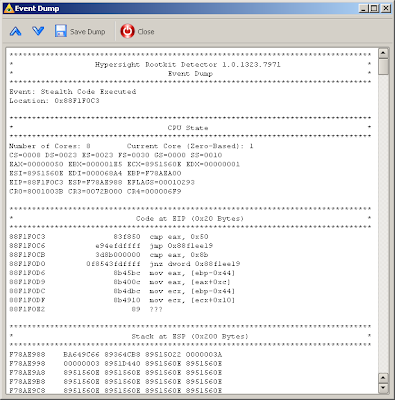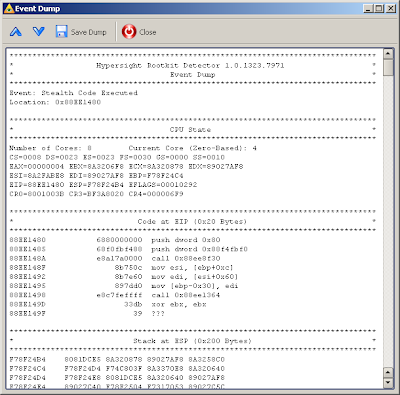We continue writing about detection of various rootkits by Hypersight Rootkit Detector. Today we will test the AllInOne rootkit aka
Trojan.Nailuj.A. This is relatively old rootkit and it does not work properly in Windows Vista and Windows 7 (bugcheck 0x7E SYSTEM_THREAD_EXCEPTION_NOT_HANDLED). However it installs correctly on Windows Server 2003. It drops the file VideoAti0.sys into %WINDIR%\system32\drivers directory. After rebooting it makes files of the dropper and the driver invisible.Let’s start monitoring of Hypersight when rootkit has become invisible. We will see “Stealth Code Executed” activity:

The rootkit’s stealth code looks like
As we can see from return address on the stack, this is a IRP hook procedure. ESI points to the DRIVER_OBJECT and EAX contains the number of IRP major function (IRP handlers are called by the opcode CALL [ESI + EAX * 4 + 0x38] in Windows Server 2003).Where the stealth code is resided? To determine this, let's look at the list of kernel modules:
As we can see, the code is resided between two modules. We can conclude this is a code of driver, which is hidden by excluding from the list of drivers.Finally, we can look at the dump of code page for each event to recover the rootkit's image in the memory:
That's all for today. Good luck with discovering new rootkits.











